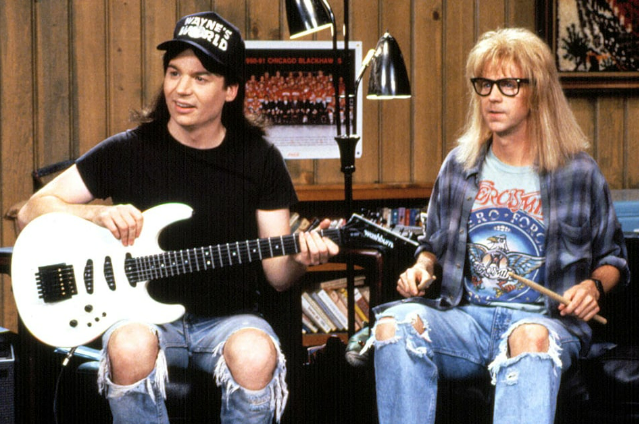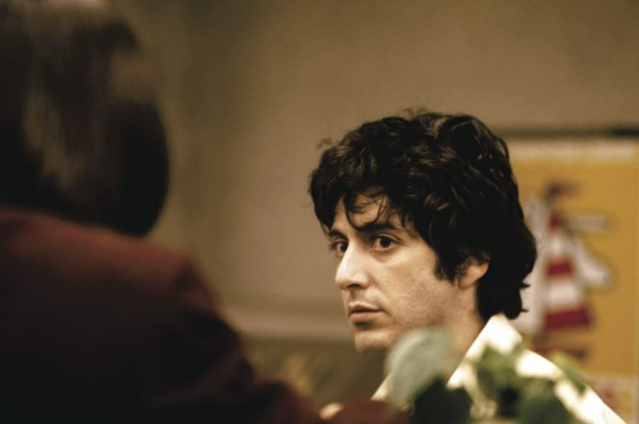Your callow heart prepares for its latest diatribe; the film that you have wanted to watch for so long is still a yard away from your reach. The sound of the crevice in the ticket being made draws you closer to your destination. The palpitations in your beating heart somehow overshadow the nervous pitter patter of your footsteps. The murmur in your inner sanctum eclipses the ringing commotion of your fellow audience. A shiver scampers through you as you make your way to your seat. Was the effect of the air conditioning so high?
Nevertheless, you settle down on your throne. There are sounds you can hear but cannot comprehend. A few thoughts that can reach you but cannot permeate through. Moments, certainly not brand new, but so bedazzlingly inimitable and unique. Suddenly, the thrill of the beginning of the movie transforms your nervousness into careful excitement. You stretch your muscles in terrifying keenness. An immersive experience awaits you in languid patience.
Glorious! How was the effect of sound so pronounced in the above paragraph, especially in possibly the most banal sequence that could possibly be? Away from the charm of a myriad production techniques, the allure of a solid script, great editing and excellent visual aid lies a gem hidden only well enough to be completely found out in its absence, an indispensable part of every single cut. Justifying the presence of sound in a film is possibly as difficult as finding water in a flooded area. Put differently, the effect of sound is so commonplace in every film that it may seem unfathomable to rely solely on visual aids. A more well thought argument would be this- the function of sound stretches far beyond the ambits of self-indulgence; it strengthens the case of the plot, adds multiple meanings to the concept of the film while offering fresh parallels of thought that would have otherwise gone slinking under the radar, and puts an emphatic end to the notion that the responsibility of sound can never trespass the action of dialogue.
Going slightly further, we divide the effect of sound into two domains: Diegetic sound and non-diegetic sound. Which could sound better if we actually understand what they mean.
Diegetic sound is basically the sound that originates from within the world of the film. You can figure out that the lion’s share of the sounds in the film is diegetic sound, and it effectively serves as the backbone of the film. It majorly includes conversations between two members of the cast in the movie, music, and well heard sound effects.
Non diegetic sounds, which could just as well be named as commentary or non-literal sound is a type of sound that can be heard by us, and most importantly, understood solely by us, and not by the performer. Does this mean that the actor has no idea about these sounds? Shouldn’t it mean that the behavioral tendencies of the actor change according to the non- diegetic happenings? How do the changes in the film scene correlate with those happening unbeknownst to the actor? The answers to these questions most probably depend on the involvement of the actor in the script writing department/ production phase. His/ her level of engagement with the actual plotline and the setting of the storyline matters to a high degree.
We embark on our journey to discover the beauty of sound through our first example using the magic of good diegetic sound. A key feature in any holistic and well rounded film is an excellent beginning, a beginning which not only permits the unbridled motion of the wings of the plot to flourish and rocket to the zenith of it’s capability but also provides an underlying tone to the temperament of the film. In that spirit, our first example is Wayne’s World (1992).
While the song perfectly complemented the oddball comedy, and the endearing yet go lucky performances of the cast, it also showcased the importance of the synergy and camaraderie between the film and the song; Wayne’s world became a well known commercial success, while Bohemian Rhapsody, a song of Queen, was rightly catapulted into the annals of music history.
It’s legendary status was only buoyed by the tragic and premature death of the lead vocalist of the song which occurred a few months before the release of the film. The movie has been widely appreciated and recognized by reviewers and critics alike for bringing a brilliant song into a very high level of prominence. If you have watched the film, however, does the scene featuring the song contain only scenes featuring diegetic sounds, or are there non diegetic sounds featured too, going by our definition? It is yours to answer.
Another example, which is a package contained in a classic and popularly preferred diegetic- non diegetic continuous sequence (As we shall see very soon), a technique used quite handsomely by Steven Spielberg, is in the movie Jaws (1975).
An initial scene that happens in the Amity beach, a very crowded one, keeping in line with the summer traditions of the New England beach town, comprises of every happening you can think on a sprightly day. A list made for an annual picnic carefully executed to the bone, a lively atmosphere of excitement and relief. An ocean prepared to soothe the nerves of the visiting citizens, fishes moving in unknowing unison to serenade the mighty ocean, and birds exploring the limits of the sky with unrestrained alacrity. Such a warm diegetic sound setting, isn’t it.
As they say, that is only until all hell breaks loose. The shark in Jaws (1975) introduces us to our first non-diegetic scene, immediately in succession to the preceding diegetic scene.
In this non diegetic music, eerie sounds- ominous in context, which reveals the other face of the ocean- a scene which reveals the many secrets harbored by the ocean, and one so devastating that it can transmogrify the fortune of the village. Note that this non diegetic setting, which is completely unknown to the actor, sets up the podium for an action-packed diegetic setting which involves the performers and the shark. It is extremely worthwhile to appreciate this well balanced and nuanced interplay between these two themes of sound that lift a film from a middling, mediocre, run of the mill curio into an engrossing work of art.
Our next pitstop is in San Francisco, USA, where we meet a man who’s successful in his pursuit of Happiness, or should I say, Happyness. This extremely well received film, which sets itself apart from other movies as a pre- eminent despite some slightly cloying direction and a predictable script, owes its iconic status to the unadorned, unalloyed, genuine, and moving portrayal of a single father trying to climb up the ladder of success. A striking aspect of this film is the correct usage of non-diegetic narration, effectively interspersed between long periods of diegetic narration.
If you have been under the impression that the key to a great film is incorporating non diegetic sounds in approximately the same ratio as that of diegetic sounds, steady yourself for getting your feet blown off by the carpet.
To understand this, we explore a true goliath in modern cinema, a lighthouse to every movie under production and a true standard for every movie to aspire to reach. Life is beautiful (1997) is an unflinching and brutally poignant film that dares to explore uncharted denizens in it’s effort to appreciate and recognize the intense turmoil that non Gentiles had to go through during the period of holocaust, and some of the subsequent measures undertaken by them to find happiness in the most horrifying situations.
While there is a good selection of non-diegetic music in the film, diegetic narration is the well preferred mode of communication to the audience through the movie, except-Yes, there is an except- the final passage of the movie, when the audiences are still wondering about the condition of the protagonist when the son of the protagonist- aged much older, reveals “ This is my father’s sacrifice for me, and his gift for me” signifying that his father was indeed killed in the concentration camp. A final non diegetic comment enriched the entire diegetic sequence of events that preceded the scene, thus providing the most memorable and heartbreaking climactic to a wonderful film, while conquering the highest pinnacle of expression and meandering close to the crescendo of raw sentimentality.
Finally, we move towards a region where the director understands his license to utilize the power of non-diegetic and diegetic sound effects together, and his outright freedom to effectively blur the lines between reality and fantasy, play a game of cat and mouse with the viewer while attempting to intersect the lost ends of each other, and offering a fresh breath of character to a persona we thought we had all figured out. This falls under the domain of trans -diegetic sounds.
The allure of trans diegetic sounds can tease us to our very core and put the viewer in his rightful pedestal. For our final example, let us visit the beginning of another movie: Dog Day Afternoon.
Yet another acclaimed film in the box office, Sidney Lumet’s cleverness and directorial sophistication is reflected in copious amounts as his astute opening move featured a cheeky dalliance between the bounds of reality and imagination. The scene, which is probably the only musical cut that grooves into the film, features the song’ Amoreena’ by Elton John. People are shown using swimming pools, digging holes( doing the work they’re paid for), watering plants and playing tennis. Overall, a sleepy afternoon where the last thing you’d expect people to be doing is raiding a savings bank. A perfect rendition of music absorbing the requirements of the premise wonderfully. A few moments later, and you’ll realize you’ve been tricked- tricked into believing it was non diegetic when it was purely diegetic- playing from the radio of the car of the wannabe robbers- the pivotal element of the sequence being the scenic 70s setting and the selection of the song.
As our footsteps gather towards the culmination of the article, remember that the amount of variations done to sequences can only measured by a film Lexicon. Diegetic sequences can be set apart from non-diegetic sequences, done away with or form the entirety film. Again, there are numerous ways in which diegetic sequences can be brought about, as is alike with non-diegetic sequences. The advent of trans diegetic sound effects which have proved to be indispensable and instrumental in the emergence of advanced sound effects in modern film is a very welcome sign. The limitless ways in which trans diegetic effects can be used is a great fillip to the producer, and a huge shot in the arm to the director. New pathways which can lead to better plots being manufactured, allowing a greater space for creative and artistic freedom to blossom, and most importantly establishing systems that allow persistent waves of change to realize while trying to ensure that the evolution of film towards an even better art form is a never ending crusade.
Picture yourself on the most pleasant morning; The appeal of the mighty sun is seldom easy to ignore, and the petrichor from the previous night’s mild rainfall draws you further towards the window. Birds chirp in barely believable tandem, and the inimitable perfume of the Magnolia flower makes you walk to the window with frightening speed. As you open the window and hear the gardener’s feet pressed on the shoulder of the lawn grass, the gentle susurration of the autumn leaves which are confused by the change in their complexion, you realize that an important sound was not listened to: The voice in your head, your thought process.
Wait a minute! Was it really your own voice in your head?


